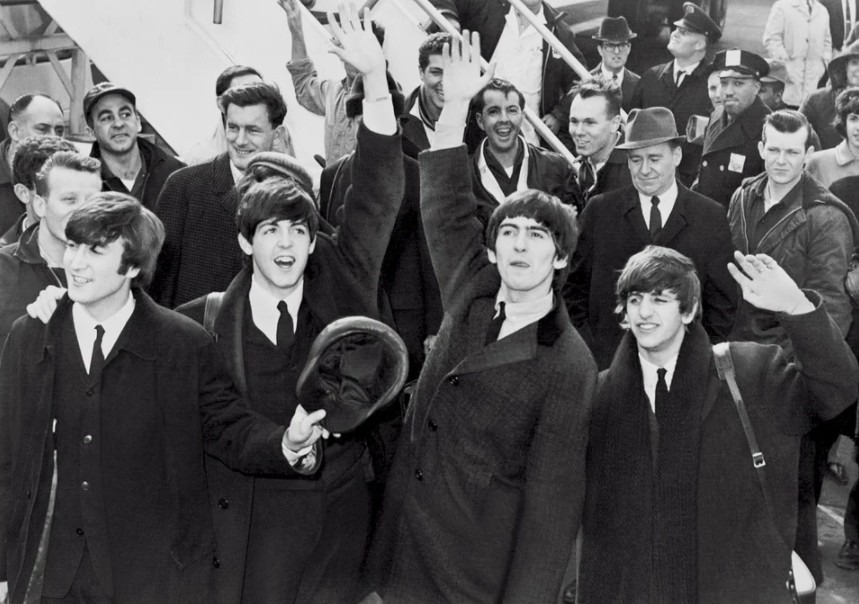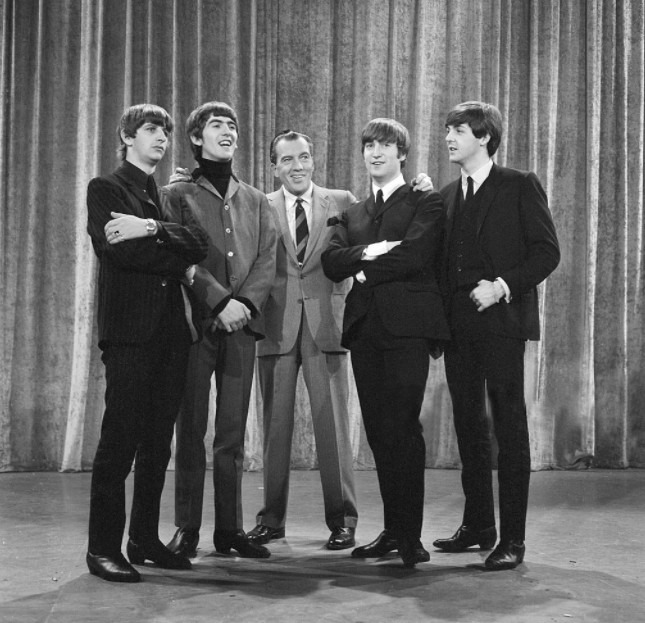The British Invasion may be one of the most monumental periods in music history, as it brought about a change in how people perceive music, especially the ones that are prominent in the United Kingdom. Through the British Invasion, we have been given the best pop band of all time, according to many music fans, and that band is The Beatles, which serves as the inspiration behind some of the most popular bands from the 1960s until today. However, the British Invasion didn’t exactly start with The Beatles; they just became the centerpiece or the mascot for it. So, who started the musical invasion? We will find out as we dive right into the history of the British Invasion.
Rise of American Music in Britain
Before the British Invasion, music history fanatics can argue that there was the American Invasion first, which was spearheaded with the popularity of blues and rock and roll in Britain. These genres of music, which is said to have a rebellious and unconventional sound compared to its preceding genre, jazz, that is more conventional and precise, became popular in Britain in the late 1950s and early 1960s, particularly to the younger generation.
It was in those periods that British musicians tried to replicate the sounds and progressions found in American rock and roll, but the first attempts to copy the genre were a failure since people would still listen to American musicians rather than the British artists who are trying to fit in. Regardless of its failure in Britain, the British style of blues and rock and roll became noticed in the United States when a British musician Lonnie Donegan produced the album called “An Englishman Sings American Folk Songs that contained the single titled “Rock Island Line,” although this single was only a cover of the original performed and popularized by the Cummins States Farm prison inmates in 1934.
Meanwhile, in Britain, a new genre called Mersey beat or British beat that is derived from rock and roll is becoming quite popular in Liverpool, a city considered to be the music capital of the company. It was during the rise of Mersey beat that an unknown band consisting of young men from Liverpool began a band that first started playing the said genre. This band would be known first as The Quarrymen.
Beatle mania
The Quarrymen was formed in March 1957 by John Lennon, who wanted to play skiffle music, a genre popularized by Lonnie Donegan. Lennon then met a fifteen-year-old musician named Paul McCartney and let him join the band as a rhythm guitarist in July. In the following year, McCartney then introduced his friend George Harrison to Lennon, and impressed with his guitar playing skill, Lennon let Harrison be part of the band as the lead guitarist.
The other members of the Quarrymen who joined Lennon in March then left the band, leaving Lennon, McCartney, and Harrison as the only members of the Quarrymen. They later changed the name of the group to Johnny and the Moon dogs, and they would begin playing in pubs and open venues around Liverpool, although they would only play if there is a drummer who is willing to perform with them.
Then, in January 1960, Lennon persuaded his friend from art school, Stuart Sutcliffe, to buy a bass guitar with the money that he got from selling one of his paintings. Before officially joining the group, Sutcliffe suggested that they should change Johnny and the Moon dogs to the shorter name “Beatals,” which serves as a tribute to Buddy Holly. They would begin using the name in January, but they would change the name of their band again to Silver Beetles in May before being a backing group for Johnny Gentle at their first-ever tour in Scotland. In July, Lennon and the other members changed the name of the group to the Silver Beatles before deciding to just call themselves the Beatles in August. Sutcliffe would eventually leave the group in 1961 to focus on his studies, and McCartney would replace him as the bassist for the Beatles. They would later hire Pete Best as the permanent drummer of the band.
As the Beatles, they began performing in several venues around Liverpool, with the most famous being The Cavern Club. Interestingly, it was in The Cavern Club where they met Brian Epstein, a record-store owner and columnist, who wanted to work for them as their manager. It was Epstein who wanted to push the Beatles into stardom, as he saw the potential for the boys to become the next big thing in British music. Epstein contacted several record labels in order for the Beatles to sign a record deal, but most of them rejected Epstein’s offer. One of those record labels that rejected the Beatles was Decca Records, who was quoted in saying that “guitar groups are on the way out.” Luckily, one particular producer named George Martin accepted Epstein’s offer and signed the Beatles to the Parlo phone label owned by EMI.
During their first recording session with George Martin at Abbey Road Studios in June 1962, the Beatles replaced their then-drummer Pete Best with Ringo Starr, who decided to join their band rather than stay with Rory Storm and the Hurricanes. The replacement came from George Martin’s recommendation to replace Best with a session drummer because Best’s drumming skills were lackluster. Hearing and seeing Best’s poor drumming also, the members of the Beatles let go of Best mutually. It was in these 1962 sessions at Abbey Road Studios that they were able to produce “Please Please Me,” “Love Me Do,” and “P.S. I Love You.”
By 1963, the Beatles became popular among the younger generation in Britain thanks to the release of their debut album “Please Please Me.” Around the same year, the popularity of the Beatles began spreading around the United States because of several news articles written about them by American columnists. The most iconic news about the Beatles that appeared in American newspapers was their performance at the Royal Variety show on November 4, 1963, when they performed in front of Elizabeth Angela Marguerite Bowes-Lyon, the mother of Queen Elizabeth II. In the same month, several newspapers began publishing articles that used the term “Beatlemania” to describe the frenzy that is happening in the music industry around Britain.
A news report about the Beatle mania that first aired on November 22, 1963, was re-aired on December 10 by Walter Cronkite, the anchor of CBS Evening News, who wanted to report a positive news days after the assassination of John F. Kennedy. The news report was then seen by Marsha Albert, a 15-year old girl living in Silver Spring, Maryland, who became an instant fan of the Beatles. Albert then wrote to Carroll James, who was working as a disc jockey for WWDC during that time, a letter asking why America can’t have music like the ones being played by the Beatles.
On December 17, James invited Albert to introduce a song by the Beatles titled “I Want to Hold Your Hand” on air. It was believed that this radio airing sparked the Beatle mania in the United States, as after hearing the song, many listeners started asking record stores if they have a vinyl record of the said song. James then began sending his sole vinyl record of the Beatles’ single to other radio stations, thus further popularizing the Beatles around the country.
On February 9, 1964, Ed Sullivan invited the Beatles to come up on stage and perform at “The Ed Sullivan Show.” It was reported that about 45 percent of the total television sets in the United States tuned in to The Ed Sullivan show during the Beatles’ performance. Many music fans believe that The Ed Sullivan Show became the catalyst for the British Invasion, as the television show, along with the popularity of the Beatles, gave other British acts a time to shine in the American music industry.
The British Invasion Outside the Beatles
Besides the Beatles, there were also other British bands that became popular in the United States during the British Invasion. The most popular British band in the United States is arguably the Rolling Stones, who were considered by many fans during the 1960s to be the rival of the Beatles in terms of popularity and musicality. However, the Rolling Stones would soon divert their musical style to a much harder and grittier style of music, which would eventually become the genre known as hard rock.
Furthermore, there were also American artists and bands who were inspired by the style of music brought by the British Invasion. The most notable band that was inspired by the Beatles during the 1960s was The Beach Boys, who originally started as a band that plays surf music, a genre that is arguably one of the most American-sounding out of all genres that originated in the United States.
It is believed that through the experimental albums by the Beatles, particularly “Rubber Soul” in 1955 and “Revolver” in 1966, that The Beach Boys (primarily member Brian Wilson) became inspired to create their widely-praised album “Pet Sounds.” On the other hand, “Pet Sounds” also inspired the Beatles to produce Sgt. Pepper’s Lonely Hearts Club Band” in 1967, which is considered by many Beatles and music fans to be one of the greatest albums in music history.
End of the British Invasion and Revival
No one exactly knows when the British invasion ended, but many music enthusiasts suggest that it ended when the Beatles broke up in 1970. During that time, the music style brought by the British bands was successfully adopted by American acts, making British music homogenous and not anymore exclusive to Britain. In addition, the growing interest and protests about the Vietnam War also contributed to the decline of British music in the United States.
During the 1970s, the only British genre of music that was popular in the United States was British progressive rock, which was popularized by bands like Pink Floyd and Led Zeppelin. Although progressive rock was popular in the United States, the said genre of music was not well-known in Britain, who preferred a simpler and more basic approach to music during that time, as opposed to progressive rock’s sudden changes in tempo and keys.
The so-called “Second British Invasion” then occurred during the 1990s, when British acts such as Robbie Williams, Spice Girls, and Oasis became popular in the United States. Thanks to the popularity of the said artists, other British bands and singers were able to successfully penetrate the American music industry despite the rising popularity of grunge music in the country. Many music fans believe that the second British Invasion is still on-going, with even considering that there is already a “Third British Invasion,” as British artists like Ed Sheeran, Adele, Zayn, and Harry Styles are still appearing constantly at the Billboard Hot 100 charts.


